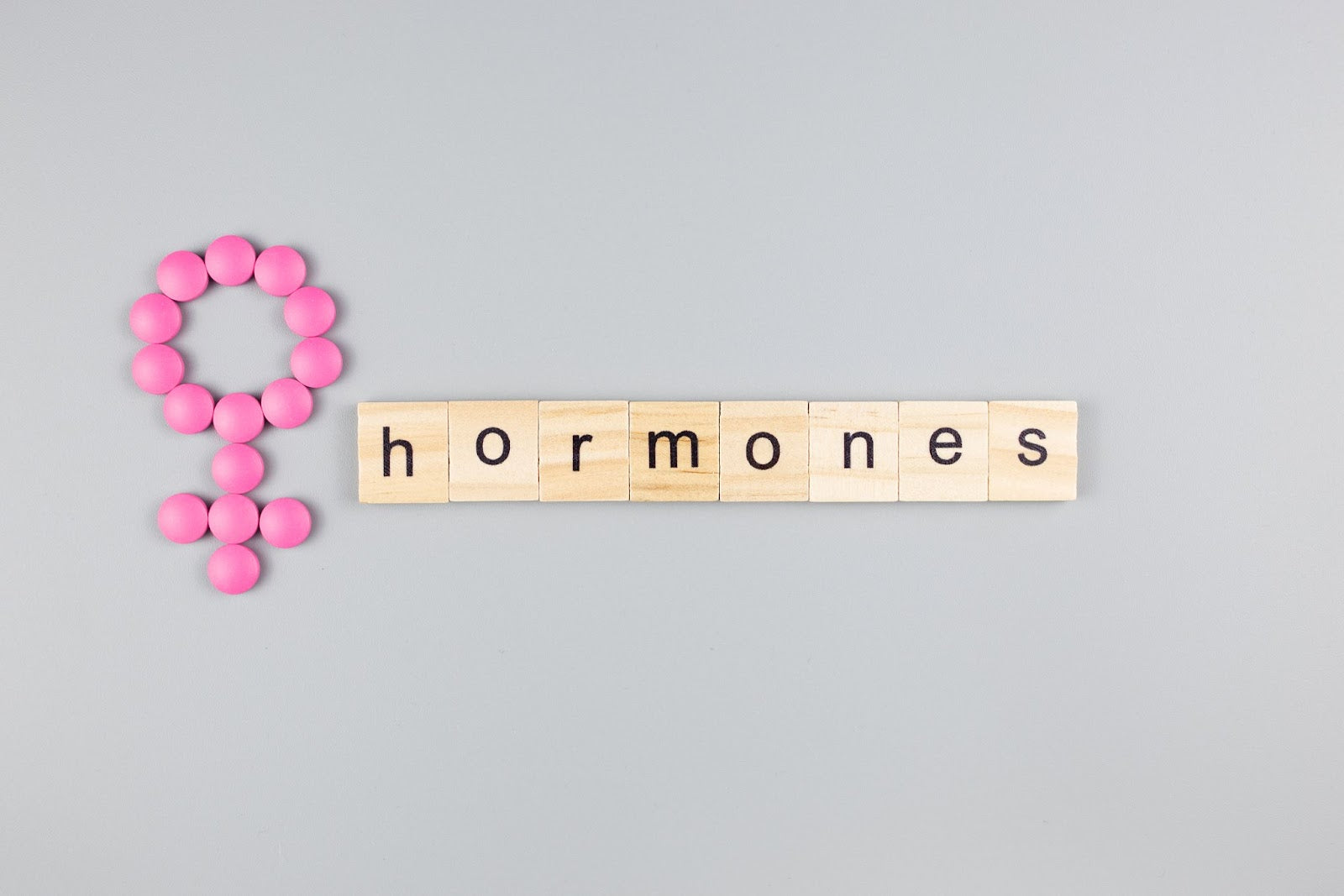Estrogen and progesterone are two essential sex hormones that govern many aspects of women’s health, from puberty and menstrual cycles to fertility and mood. A hormonal imbalance, where one hormone is too high or too low compared to the other, can disrupt the body’s natural rhythm and cause a range of physical and emotional symptoms
Estrogen and progesterone imbalances can be influenced by various lifestyle factors, including diet, physical activity, and exposure to environmental substances. These imbalances are often linked to conditions such as endometriosis, polycystic ovary syndrome (PCOS), and menopause, which can significantly impact women's reproductive health and overall well-being. Understanding the lifestyle factors that contribute to these hormonal imbalances is crucial for developing effective management strategies.
What Are Estrogen and Progesterone?
Estrogen
Estrogen is the primary female sex hormone, responsible for:
-
Development of female secondary sexual characteristics
-
Regulation of the menstrual cycle
-
Maintaining bone density and skin elasticity
-
Supporting vaginal health and brain function
There are three main types: estradiol (E2), estrone (E1), and estriol (E3) — with estradiol being the most dominant during reproductive years.
Progesterone
Progesterone is mainly produced after ovulation and plays a role in:
-
Preparing the uterus for implantation
-
Maintaining early pregnancy
-
Regulating mood and sleep
-
Counterbalancing the effects of estrogen
Impact of Hormonal Imbalance
When estrogen and progesterone levels are not in sync, it leads to several health issues, such as:
Estrogen Dominance (Too much estrogen relative to progesterone)
-
Irregular or heavy periods
-
Breast tenderness
-
Weight gain, especially around the hips/thighs
-
PMS, anxiety, or mood swings
-
Increased risk of endometriosis, fibroids, and breast cancer
Low Estrogen
-
Hot flashes
-
Vaginal dryness
-
Depression
-
Poor bone health
-
Irregular or missed periods
Low Progesterone
-
Short luteal phase
-
Infertility or miscarriage
-
Insomnia
-
Anxiety or irritability
-
Spotting before periods
What Causes Estrogen and Progesterone Imbalance
Dietary Influences
-
An unbalanced diet, particularly one high in processed foods and low in essential nutrients, can lead to hormonal imbalances. Obesity and inflammation resulting from poor dietary choices can disrupt estrogen and progesterone levels, affecting mood, fertility, and other health aspects.
-
Soybean phytoestrogen-rich extracts have been shown to regulate hormone levels effectively, particularly in menopausal conditions, suggesting that diet can play a role in managing hormonal imbalances.
Physical Activity and Lifestyle
-
Sedentary lifestyles contribute to obesity and metabolic disorders, which are associated with hormonal imbalances. Regular physical activity can help maintain a healthy weight and improve hormonal regulation.
Environmental and Genetic Factors
-
Exposure to environmental toxins and genetic predispositions can also influence hormone levels. For instance, PCOS is linked to both genetic factors and lifestyle influences, with obesity exacerbating hormonal and metabolic dysfunctions.
-
In endometriosis, the imbalance between estrogen and progesterone is associated with chronic inflammation, which may be influenced by environmental and lifestyle factors.
Preventive Measures and Natural Support
1. Manage Stress
-
Practice yoga, deep breathing, or meditation to lower cortisol.
-
Prioritise 7–8 hours of quality sleep.
2. Balance Blood Sugar
-
Reduce refined carbs and added sugars.
-
Eat protein and healthy fats with each meal.
3. Support Liver Detoxification
-
The liver helps break down excess estrogen.
-
Eat cruciferous vegetables (broccoli, kale, cabbage).
4. Exercise Moderately
-
Strength training and walking improve hormone sensitivity.
-
Avoid overtraining, which can suppress progesterone.
5. Avoid Xenoestrogens
-
Use glass or stainless steel instead of plastic.
-
Choose organic skincare and personal care products.
Nutrients and Supplements That Help
1. Magnesium
-
Supports hormone production and reduces PMS symptoms.
Dose: 200–400 mg/day
2. Vitamin B6
-
Promotes progesterone and helps reduce estrogen dominance symptoms.
Dose: 50–100 mg/day
3. DIM (Diindolylmethane)
-
Found in cruciferous vegetables; helps detox excess estrogen.
Dose: 100–200 mg/day
4. Vitex (Chaste Tree Berry)
-
Promotes progesterone by supporting pituitary hormone regulation.
Dose: 400–1000 mg/day
5. Omega-3 Fatty Acids
-
Anti-inflammatory and supports hormone receptor function.
Dose: 500–1,000 mg EPA/DHA
Suggested Supplements at PicPax
Conclusion
Estrogen and progesterone are key hormones that need to remain in balance to support menstrual health, fertility, mood, and overall well-being. Imbalances can arise due to stress, diet, ageing, or environmental toxins, but many symptoms can be managed naturally.
Through lifestyle adjustments, a nutrient-rich diet, and targeted supplements, women can restore hormonal harmony and feel more in control of their reproductive health. Support your journey with PicPax supplements, formulated to help balance hormones naturally and promote long-term wellness.



